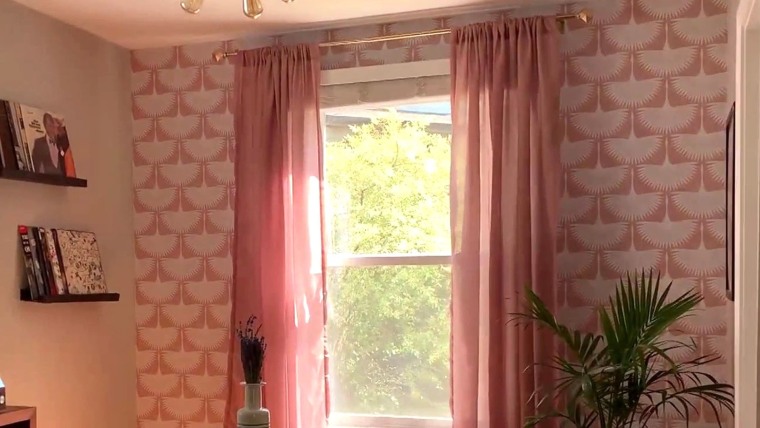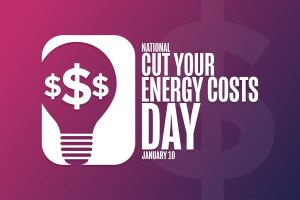Purchasing a home is a big milestone for many people, whether it’s about solidifying your status as an adult, providing a place for your growing family or just having a place to call your own. It’s also true that the cost of becoming a homeowner can feel intimidating.
In order make a down payment (a percent of the total loan you’ll take out to buy the house), you’ll need to take inventory of your savings, rework your budget and likely make some changes to your lifestyle. But it’s all in the name of seeing your name on a deed and owning a piece of real estate.
“The general rule of thumb is to save 20% of the home cost for a down payment,” Cindy Zuniga-Sanchez, founder of Zero-Based Budget Coaching LLC, told TMRW. “With a 20% down payment, you will have solid equity (ownership) in your asset, have a better chance of being approved for a mortgage at a decent interest rate and will avoid having to pay PMI (private mortgage insurance).”
Zuniga-Sanchez acknowledges that sometimes 20% just isn’t doable, especially in areas with a higher cost of living where a down payment could be upward of $100,0000. She said aspiring homeowners should not be discouraged, though, since there are many programs that require down payments as low as 3.5%, such as FHA loans. “FHA loans are backed by the Federal Housing Administration and are provided by FHA-approved lenders,” she said.
It’s also important to consider the various expenses that will be factored into your mortgage payment, including the loan principal, interest, insurance, taxes and homeowner’s association (HOA) fees and PMI if applicable, she said. “You should also consider your own personal finances, including your income and current debt obligations.” To calculate what kind of mortgage payment you can afford, Zuniga-Sanchez suggests using a free calculator, like this one from Nerd Wallet.
Once you’ve figured out how much you can afford for a house and what you’ll be putting down in a deposit, it’s time to start saving for that down payment so you can make the dream of homeownership a reality.
1. Transfer savings into a separate account
“I recommend saving for a home in a ‘sinking fund,’” said Zuniga-Sanchez. “This is a savings account separate from your emergency fund that you use to save for a short or mid-term expense. For example, if you are looking to purchase a home in three years and save a $36,000 down payment, you should save $1,000 per month ($1,000 x 36 months) in a house down payment fund. Breaking up your goals into smaller bite-sized pieces by saving incrementally can make a large daunting number more manageable.”
You can set up automatic deposits into a savings account set up for the specific purpose of saving for a down payment. This way, the money goes directly into your account each month.
2. Cut expenses
Look for places where you can cut back including dining out, vacations and other luxury items that fall into the “want” not “need” category. Although it’s not fun to give up some of the extras you’re used to, such as ordering takeout or buying new clothes, keep the big picture goal of homeownership in mind and it’ll be much easier.
3. Pay off high-interest debt
Make moves to pay off high-interest credit cards and/or transfer balances to lower or zero-percent cards with a plan to pay them down. The money you’re paying toward interest on those high-rate cards can easily be earmarked for your dream home.
4. Find tax breaks
“One of the most popular tax deductions that homeowners can take advantage of is the mortgage interest deduction, which allows homeowners to deduct the interest paid on the first $750,000 of a qualified mortgage,” advised Zuniga-Sanchez. “I recommend that homeowners contact a qualified tax professional to learn more about this and other tax benefits including mortgage points deduction, property tax deduction and residential energy tax credits.”
5. Ask relatives for help
Family can be a big help sometimes, especially when you’re buying a first home. If you have a relative who’s in the position to give or lend you money, just be clear about the terms of your agreement upfront (such as whether you’ll need to pay the money back and in what time frame) to avoid any misunderstandings.
Whether it’s money from a tax return, a bonus from work or a gift, send those funds directly to your savings account.
7. Ask for a raise
One way to boost your income, especially if you’re feeling confident in your current job, is to negotiate a higher salary or rate. You can direct any additional earnings right to your savings account to reach your goal of homeownership even sooner.
8. Sell stuff
Everything from designer clothing you no longer wear to electronics and furniture in good condition can all be put toward your down payment. Sites such as Amazon, eBay, Facebook Marketplace and Poshmark will help you unload unwanted items for cash.
9. Tap into retirement
If you’ve been contributing to a retirement fund, now could be the time to redirect some of that money toward your savings for a down payment. You can even withdraw up to $10,000 from an IRA without a penalty if you’re a first-time home buyer.
Cutting back, working harder and saving more isn’t easy, but if you keep your “why” front and center you’ll find the sacrifices you have to make a whole lot easier. Try to make your goal tangible: Print out a picture of the type of home you want to purchase so it’s there for you to see each morning as you put in the hard work of saving for that down payment.
“Be realistic about what you can afford,” said Zuniga-Sanchez. “Set a specific budget for your home and stick to it even if you are approved for a larger loan. Although a larger loan can mean a larger and more desirable home, it also means a larger mortgage payment, which can conflict with your current expenses and debt obligations. Importantly, there are costs outside of the mortgage payment that first-time homeowners must consider including closing costs (attorneys, brokers, and inspections), home repairs, home maintenance and potentially higher utility bills.”
And remember, each step you take brings you closer to that goal of owning your own home.
Related:






